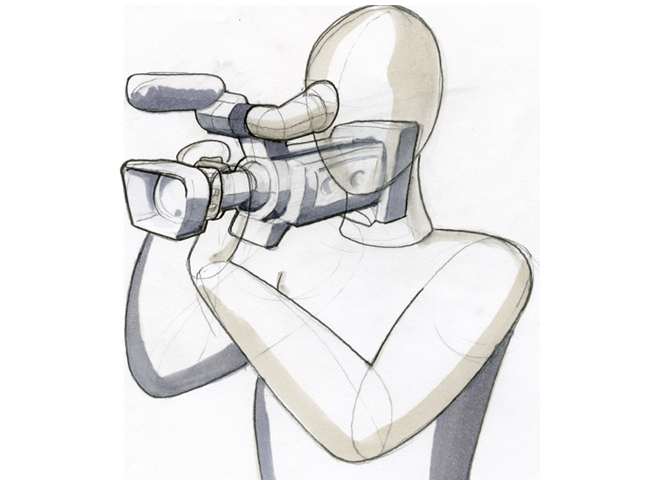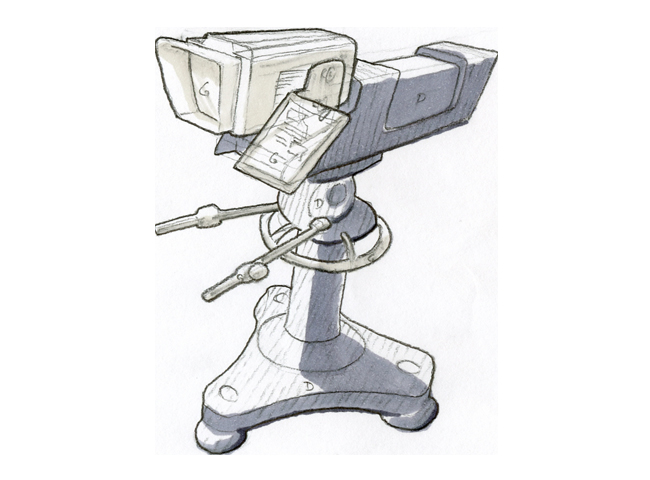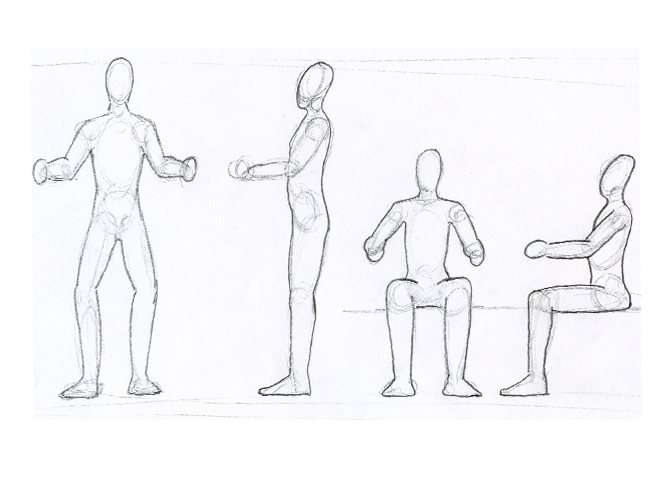7. October 2010
The observation show that there are two basic control types:
1. Handheld / Shoulder Camera

In a handheld system, the cameraman is directly connected with the camera. He uses his whole body to move the camera. For example the pan axle is the cameraman and to move over pan he turns left or right with his body. He always faces the camera direction. The hands are controling aperture(left) and zoom(right). With the right arm he tilts the camera. To move the camera he has to walk. Because of the joint movement by walking the camera moves up and down.
2. Tripod / Studio Camera

The studio camera is a more advanced System. All moves are indirect and the cameraman has to control the handle that moves and adjusts the camera. Once you a position is adjusted it is kept till someone changes it.
Movement Analogy
Both give all degrees of freedom to the user, that are neccesary in a MAV flight control. Those systems can be used as an existing analogy to improve on them to create a new GCS. The shoulder / handcameras are related to body movement and give a very direct feedback to the user, because he is joint with the camera. The tripods are more indirect and allready mediate the movement to the camera. In a GCS the movement will be also mediated and additionaly transmitted, so this system seems to be closer related to the drone.
 Both support the same functionality.
You have five degrees of freedom:
1. For-/backward
2. left/right
3. pan
4. tilt
5. elevation
To adjust the view you have
1. zoom
2. aperture
Both support the same functionality.
You have five degrees of freedom:
1. For-/backward
2. left/right
3. pan
4. tilt
5. elevation
To adjust the view you have
1. zoom
2. aperture
Working Position
 The most common position is to stand. Some of the interactions are done while sitting.
It will be interesting to see if the position can be more comfortable without restricting the movement. And to see if it is necessary to change this.
The most common position is to stand. Some of the interactions are done while sitting.
It will be interesting to see if the position can be more comfortable without restricting the movement. And to see if it is necessary to change this.